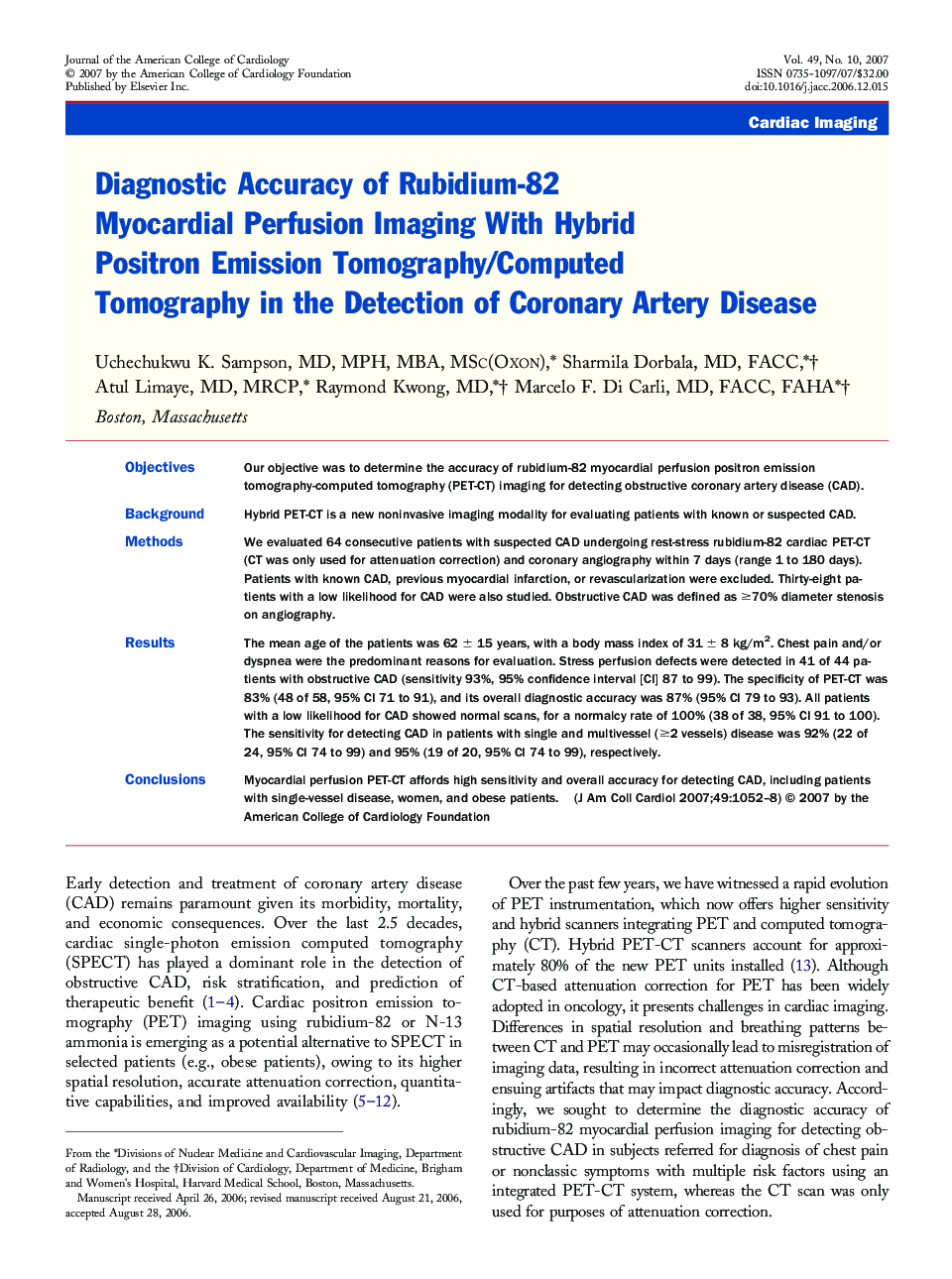| Article ID | Journal | Published Year | Pages | File Type |
|---|---|---|---|---|
| 2953374 | Journal of the American College of Cardiology | 2007 | 7 Pages |
ObjectivesOur objective was to determine the accuracy of rubidium-82 myocardial perfusion positron emission tomography-computed tomography (PET-CT) imaging for detecting obstructive coronary artery disease (CAD).BackgroundHybrid PET-CT is a new noninvasive imaging modality for evaluating patients with known or suspected CAD.MethodsWe evaluated 64 consecutive patients with suspected CAD undergoing rest-stress rubidium-82 cardiac PET-CT (CT was only used for attenuation correction) and coronary angiography within 7 days (range 1 to 180 days). Patients with known CAD, previous myocardial infarction, or revascularization were excluded. Thirty-eight patients with a low likelihood for CAD were also studied. Obstructive CAD was defined as ≥70% diameter stenosis on angiography.ResultsThe mean age of the patients was 62 ± 15 years, with a body mass index of 31 ± 8 kg/m2. Chest pain and/or dyspnea were the predominant reasons for evaluation. Stress perfusion defects were detected in 41 of 44 patients with obstructive CAD (sensitivity 93%, 95% confidence interval [CI] 87 to 99). The specificity of PET-CT was 83% (48 of 58, 95% CI 71 to 91), and its overall diagnostic accuracy was 87% (95% CI 79 to 93). All patients with a low likelihood for CAD showed normal scans, for a normalcy rate of 100% (38 of 38, 95% CI 91 to 100). The sensitivity for detecting CAD in patients with single and multivessel (≥2 vessels) disease was 92% (22 of 24, 95% CI 74 to 99) and 95% (19 of 20, 95% CI 74 to 99), respectively.ConclusionsMyocardial perfusion PET-CT affords high sensitivity and overall accuracy for detecting CAD, including patients with single-vessel disease, women, and obese patients.
